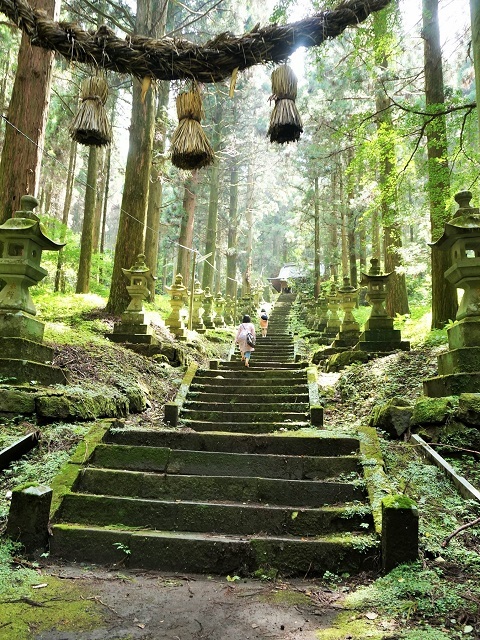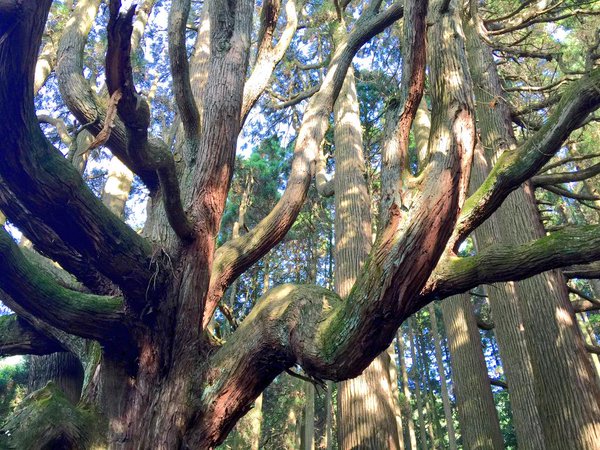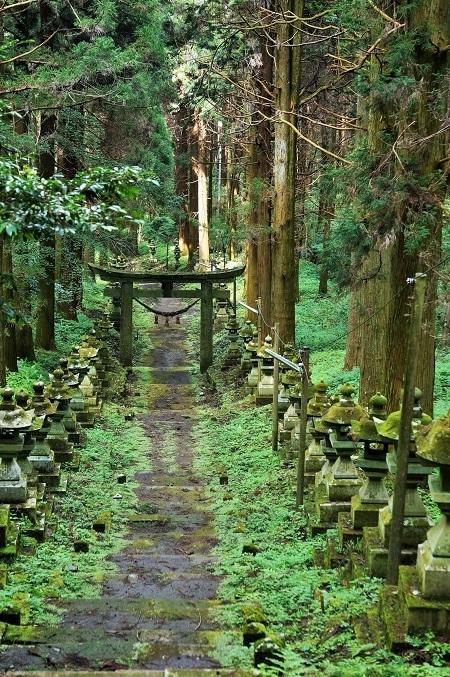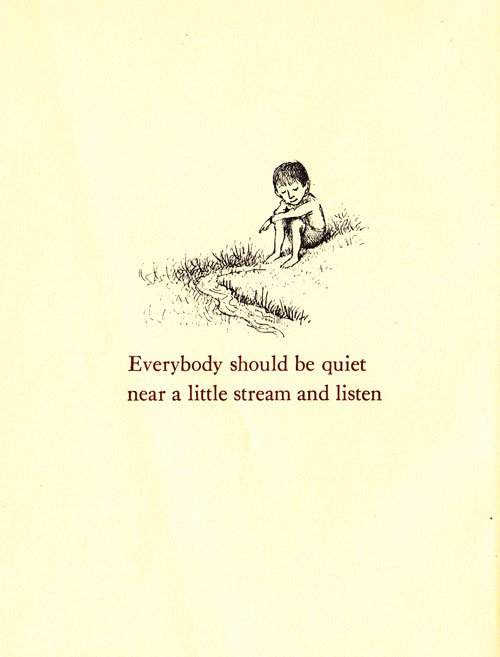 As far as I know, there is no special celebration of the winter solstice in Shinto, preoccupied as it is with clearing away old impurities before the renewal of the year with Oshogatsu (New Year). However, it seems important that the shortest day of the year be marked in some way, and a visit to a power spot, whether real or virtual, seems in order. In this respect An article in Rocket News celebrating a power spot in Kyushu has providentially drawn attention to itself.
As far as I know, there is no special celebration of the winter solstice in Shinto, preoccupied as it is with clearing away old impurities before the renewal of the year with Oshogatsu (New Year). However, it seems important that the shortest day of the year be marked in some way, and a visit to a power spot, whether real or virtual, seems in order. In this respect An article in Rocket News celebrating a power spot in Kyushu has providentially drawn attention to itself.
And so this year the solstice spotlight shines on the grandly named but small and powerful Kamishikimi Kumanoimasu Shrine in Kumamoto Prefecture.
*********************
Deep in the forests of Takamorimachi, a small town in Kumamoto Prefecture on Japan’s southern island of Kyushu, hides a humble shrine shrouded by trees and moss-covered greenery. Hailed as a “power spot” by the Japanese, Kamishikimi Kumanoimasu Shrine is a mystical destination for those looking to feel the earth’s energy and recharge their spirits, or to just take in the all the scenic beauty it has to offer.
Twitter has been abuzz about this particular shrine, and for good reason. Even before entering the forest you can tell something magical is afoot. Being there must make you feel like you’ve been spirited away to an enchanted scene straight out of a Ghibli film. You can feel the serenity of the place just by looking at the photos; if you’re ever in need of a real good recharge, this is without a doubt the place to go.
“Now and again, it is necessary to seclude yourself among deep moutains and hiden valleys to restore your link to the source of life.” – Morihei Ueshiba

The main shrine, or Honden

The giant wind tunnel. This particular power spot attracts many visitors. (All images courtesy Cocopri)

And not far away are awe-inspiring giant cedars (courtesy Sakiko Yoshimoto)



Happy summer solstice from the Southern Hemisphere. It’s interesting that the solstice doesn’t feature in Shinto celebrations. As you know, marking the shortest and longest day of the year is an important part of other nature-based belief systems. This shrine looks enchanting. From what I can work out it is on the flanks of Mt Aso, the largest active volcano in Japan. That makes it even more enticing to visit (hopefully I have my geography right!).
If you get a chance to visit the shrine on your next trip to Japan, Jann, I very much hope you’ll post a report for us here. It looks like the perfect image of what one would wish a nature shrine to be…
Actually, by strange coincidence I have already been there! And it really is a strange coincidence– I was not trying to go there at all, I had never even heard of it. This past Obon I went to Miyazaki to meet my girlfriend’s family. We took the scenic route back with a good friend, spending a night in Aso, visiting a waterfall and Heitate Jingu along the way. When traveling through the country it’s of course not uncommon to spot torii from the side of the road; if you stopped at every one you found, you’d never get anywhere. But right as we passed this one, exhaustion caught up with our driving friend, and he opted to stop and take a nap while my girlfriend and I explored a bit.
Heading through an unknown torii up a mountain path with no visible end is of course a bit of a leap of faith, as you have no idea if your walk will be two minutes or two hours! Luckily this one ended up being in the 10 minute range. It’s a lovely hike, a steep forest path strewn with large stones along the side. One fairly early along the way has a shimenawa tied around it, and a sign posted next to it with the message that it just recently fell down the mountain some years ago.
We were very lucky that along the way we met a man and a woman coming down from the top; they told us about the giant rock at the top, something that we possibly might not have discovered had we just stopped at the honden! The main path stops there at the shrine. But there is a small and rugged path behind the honden, planks of wood beat into the ground every few feet. As it was muddy after a rain, we had to take some care as we went.
As you catch sight of the giant rock at the top — the iwakura which the main shrine is built to revere and channel — it really is quite breathtaking. Simply calling it a “wind tunnel” does it an injustice. It is a grand rock atop a mountain, with a precipitous gorge directly behind it revealing a lovely misty valley vista. It was one of those times that the sun battles rain for dominance, occasionally poking through a bright beam through the clouds, and it really was an ideal place to enjoy the show.
As we walked through and under, big drops of water smacked us on the head from time to time. There was a focal point for this grand iwakura in the form of a simple paper goshintai and a tiny wooden donation box in front of it, but it almost seemed perfunctory. If you make your way around the edges of the grand rock, there are hollows at which many cairns are stacked, prayers made of stone.
One more thing seems important to relate. The grand rock iwakura is dedicated to Izanagi and Izanami. I am not sure how long Kamishikimi Kumanoimasu Shrine has been dedicated to this divine couple, but it’s worth noting the resemblance of the rock to the famous Izanagi-Izanami “wedded rocks” of Meotoiwa. It is rather as though the cord connecting their great souls is not simply an oft-replaced shimenawa rope, but manifested into the form of the rock itself. A particularly robust symbol of everlasting union.
It was a magical experience. I highly recommend it as a destination for anyone passing through the Aso area, perhaps as a double feature with Heitate Jingu.
Great to get such a firsthand account. Many thanks, Quinn… I found the description of the iwakura particularly striking, though I guess it was a paper gohei rather than a goshintai (which may have been the rock itself). I envy you your ‘magical experience’ and hope to enjoy a similar visit when I’m next down in Kyushu. I’m sure other readers will be inspired too by your description. Thanks for taking the time.
On the issue of Shinto and the solstice and the lack of any grand festivals, I’ve wondered about that too. It’s worth noting that Jinja Honcho lists the solstices on their calendar– as a “major annual household event”. (http://www.jinjahoncho.or.jp/en/publications/invitation/)
It’s also worth noting that, although there are no big Shinto festivals, the winter solstice is still a part of Japanese traditional culture, being a day on which one takes a bath with yuzu and eats pumpkin (both of which I am proud to say I actually remembered to do this year).
Finally, given that the winter solstice is associated with Shinto’s most famous story, Amaterasu’s cave story, it seems quite appropriate that the day *after* the solstice — i.e. the day when Amaterasu starts coming out of the deepest point of the cave and shining ever more strongly on the earth — is “Tenno Tanjobi”, a national holiday celebrating the entry into the world of the human emissary of the Amaterasu royal line, the Emperor. A fitting coincidence!
Many thanks for that useful Jinja Honcho linking. Mind you, there are a lot of things included there that would come as a surprise to the average Japanese, since they are not practised or have fallen out of use. Still it’s an interesting overview of how things are perceived…
Gohei! Yes, that’s precisely what it was. Thanks for the correction.
I’m glad you enjoyed the account. It really is a lovely coincidence, if that’s the right word, that I happen to have been already, without even trying– earlier this year, no less, right on the cusp of trendiness. It seems to me that the kami there must be interested reaching a wider audience right now– thanks for doing your part, John! :-)